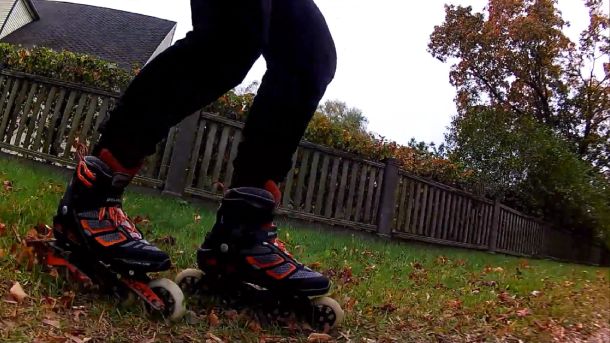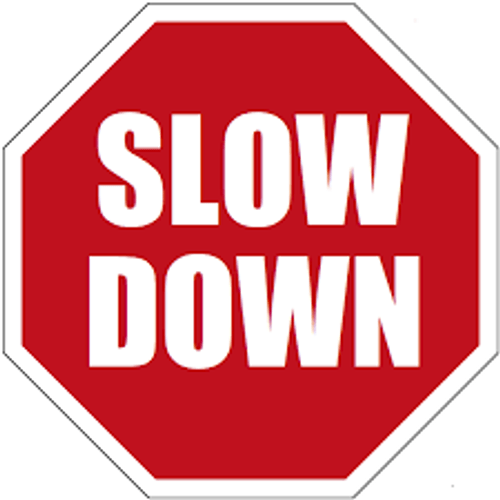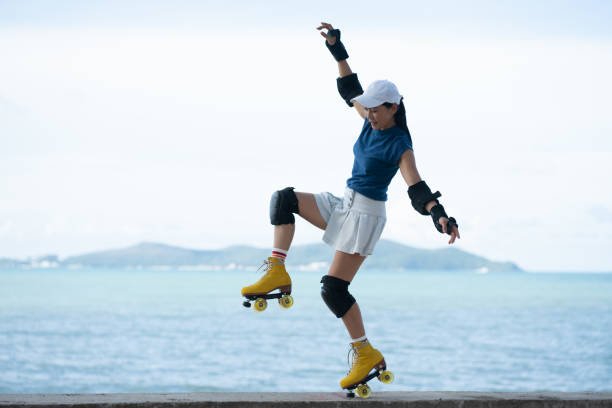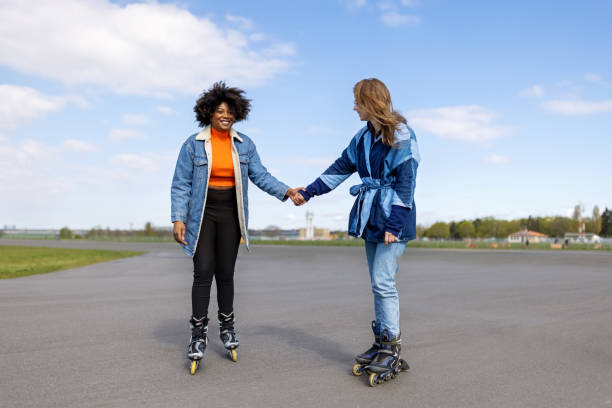5 Ways to Slow Down your Skates
Do you crave more control over your skates? Perhaps you're a beginner who is still trying to master the basics. It could be that all you need to break out of the wobbly-stage are a pair of slower, easier-to-control skates! Alternatively, perhaps you just prefer to take it easy on your skates, or require less speed to perform tricks? This post will show you the possible steps that you could take to achieve slower skates.
1) Practice on grass on carpet
Seems obvious, right? A thicker, softer surface will provide more friction than a hard, smooth surface. As a result, you will have slower skates- and there's always the bonus of a cushioned fall!
A field is the perfect starting point for learning to roller skate. You have lots of space and your skates will only really roll as far as you push them, so you're in full control. This allows you to focus more on achieving the appropriate posture and balance before you level-up to the harder surface which will let you glide more smoothly.
If you really want to build up slowly, you may choose to start in a field with thick-cut, long grass. Then, you have the option of moving to lower-cut grass, which will allow you to build speed gradually. The less friction that the surface you're skating on provides, the faster your roller skates can go.

2) Tighten the axle nuts
The axle nuts are what fasten the wheel to the skate. If these are tightened appropriately, the axel nuts will allow the wheel to roll smoothly. However, if you tighten these axle nuts even further using a t-tool, you will be forcing the wheel closer to the other components of the skate. This creates more friction and (as we learned earlier) we know that increasing friction decreases speed.
Important! Try not to let your wheels roll too much with the axle nuts tight. If you do, this can damage your bearings, meaning even when you loosen the axel nuts, the wheels will no longer be able to perform to their full potential. Like the last tip, this tip should be used by beginners who are still getting the hang of balancing. As long as the wheel is not turning, the bearings will be fine.

The above two tips are ideal for beginner skaters who want to skate slowly temporarily while they're getting used to it. But what if you want a long-term method of slowing down your skates? Perhaps the next three tips will be of more use to you.
3) Use lower ABEC rated bearings
Bearings are rated using the ABEC scale. < Click here to be taken to a previous blog post where ABEC ratings and bearings were discussed in a little more depth.
To put it simply, the lower the ABEC rating of your bearings, the more difficult it will be for your skates to achieve high speeds. As ABEC-1 or ABEC-3 are the standard quality of bearings for roller skates, choosing bearings rated ABEC-1 will be more appropriate for slower skaters.

4) Use softer wheels
Softer wheels are slower than hard wheels because they push down into the surface being skated on. This means that softer wheels absorb the surface much better, whereas harder wheels tend to just roll over it. For this reason, soft wheels roll more slowly.
The shock absorption of softer wheels is an added bonus! When skating on uneven surfaces like pavements, you won't feel the bumps as much as you would on hard wheels.
Soft wheels are rated on the durometer. If you would like soft wheels, a measurement of around 78a would do nicely.

5) Use smaller wheels
Small wheels tend to go slower than large wheels. This is because the circumference of a small wheel will cover less space in one rotation than a large wheel would. Therefore, small wheels have to turn much faster to achieve the same speed as large wheels. This means that you would have to put quite a lot of effort in to get a skate with small wheels to travel as quickly as a skate with larger wheels!
If you simply want to skate slowly, around 55-65mm wheels would be suitable.
If you're a more advanced skater who wants to have control over your skates, for example when performing tricks, you may wish to have skates smaller than the above range.
Follow these steps and you'll be well on your way to achieving slower skates that are easier to control. Have you found any of these tips useful? Do you have any suggestions for further tips to slow down a pair of skates?
We'd love for you to let us know!




